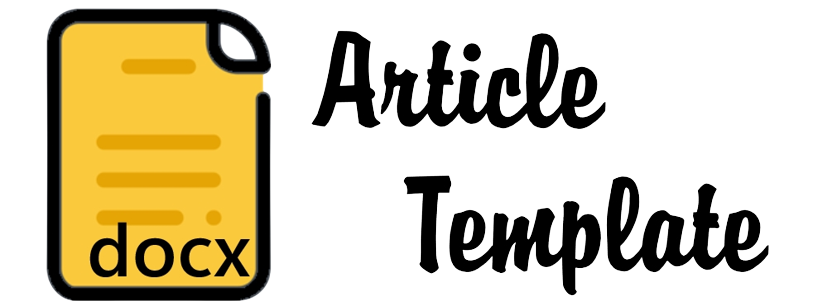The Simalungun Script in the Development of Cultural Heritage and Local Wisdom Learning Plans
DOI:
https://doi.org/10.55909/jpbs.v4i3.745Keywords:
Simalungun script, cultural heritage, local wisdom, lesson planAbstract
The Simalungun script is one of the intangible cultural heritages of the Simalungun Batak community, possessing significant historical, linguistic, and symbolic value. However, modern developments and the dominance of the Latin alphabet have led to a significant decline in its usage. This article aims to examine the role of the Simalungun script in cultural heritage development through a community-based preservation and revitalization approach. Utilizing Laurajane Smith’s (2006) theory of heritage preservation and an ecolinguistic perspective, this study analyzes strategies for strengthening the Simalungun script through education, digitalization, and integration into creative media. The research employs a descriptive method with a qualitative approach. The findings reveal that the Simalungun script can serve as a contextual and educational tool for cultural transformation and identity formation among younger generations. School involvement programs, the development of local curriculum, and the implementation of technology-based initiatives using the script have proven effective in raising awareness and enhancing cultural literacy skills. The study also identifies that the Simalungun script consists of 19 ina ni surat (main letters): a, ha/ka, ba, pa, na, wa, ga, ja, da, ra, ma, ta, sa, ya, nga, la, nya, i, and u. These characters are typically curved and angular, and are written from left to right on media such as tree bark, bamboo, or bone. Additionally, eight anak ni surat (derived letters) are recognized: haluan, haboritan, hatalingan, sihorlu, hamisaran, hatulungan, hajoringan, and panongon. Therefore, preserving the Simalungun script is not merely an act of conservation, but a dynamic strategy for the development of cultural heritage that is adaptive to the times.
References
Austin, P. K., & Sallabank, J. (2011). The Cambridge handbook of endangered languages. Cambridge University Press.
Collins, J. T. (2009). Bahasa dan masyarakat: Perspektif sosiolinguistik Indonesia. Masyarakat Linguistik Indonesia.
Davidson, G., & McConville, C. (1991). A heritage handbook. St. Leonard, NSW: Allen & Unwin.
Grenoble, L. A., & Whaley, L. J. (2006). Saving languages: An introduction to language revitalization. Cambridge University Press.
Hasan, M. T. (2002). Metodologi penelitian kualitatif. Malang: Lembaga Penelitian Universitas Malang.
Kozok, U. (2009). Surat Batak: Sejarah perkembangan tulisan Batak. Jakarta: Gramedia.
Kristina, D., & Setyarini, S. (2020). Revitalisasi bahasa daerah melalui teknologi digital. Jurnal Penelitian Humaniora, 21(1), 57–70. https://doi.org/10.23917/humaniora.v21i1.9162
Mulyadi, D. (2021). Pembelajaran aksara lokal melalui pendekatan digital di sekolah dasar. Jurnal Pendidikan Bahasa dan Sastra, 21(2), 135–148. https://doi.org/10.17977/um018v21i22021p135
Musgrave, S. (2014). Language documentation and education for endangered languages. Language and Education, 28(3), 289–298. https://doi.org/10.1080/09500782.2013.808074
Nasoichah, C. (2015). Faktor yang mempengaruhi perbedaan bentuk aksara Batak pada pustaha laklak bambu di Mandailing Natal. Forum Arkeologi, 28(3), 145–154.
Purba Dasuha, J. (2006). Perekat identitas sosial budaya. Medan: Koran SIB.
Rahayu, R. (2020). Pelaksanaan mulok Bahasa Lampung dalam upaya pelestarian bahasa daerah di Kabupaten Lampung Selatan. Jurnal Kelasa, 15(1), 46–63.
Sinaga, W. (2024). Pengenalan aksara Batak Simalungun bagi siswa Sekolah Dasar Negeri 091311 Pargampualan Kecamatan Panombean Panei Kabupaten Simalungun. Jurnal Pendidikan Tambusai, 8(2), 31287–31300.
Smith, L. (2006). Uses of heritage. London: Routledge.
UNESCO. (2017). Safeguarding intangible cultural heritage in education. Paris: UNESCO Publishing.
Downloads
Published
How to Cite
Issue
Section
License
Copyright (c) 2025 Ramlan Damanik, Warisman Sinaga, Herlina, Asriaty r Purba, Jekmen Sinulingga

This work is licensed under a Creative Commons Attribution-NonCommercial-ShareAlike 4.0 International License.







